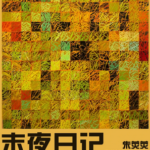The predecessor of Jiangyangfan Park was a sediment accumulation site for the dredging of West Lake. After six years of stacking and exposure, aquatic and terrestrial plant seeds that had been dormant for centuries in the lake’s sediment began to germinate, transforming Jiangyangfan into a secondary wetland dominated by weeping willows and hydrophilic plants. In 2008, Hangzhou transformed the former sediment reservoir into a new model of West Lake Park for the 21st century. During the renovation process, the park’s cultural department preserved the vegetation almost entirely, without uprooting any plants. When selecting plants for supplementary planting, all native species were chosen: the intoxicatingly beautiful Coreopsis, the graceful Pennisetum, the wave-like Polygonum, the dogwood with red berries, and the naturally wild Cosmos, all of which blend harmoniously with the willows that naturally grew from the West Lake’s sediment. The park also resembles the Xixi Wetland, featuring multi-layered wetland landscapes such as hydrophilic forests, shallow marshes, and lakes and ponds, providing a habitat for birds, fish, waterfowl, and amphibians. A unique feature of the park is its two public toilets, which are open to the sky without ceilings. Some jokingly say that even when using the facilities, one can breathe the fresh air of nature. The park is open year-round from 8:30 to 21:00.
Jiangyangfan Ecological Park
The predecessor of Jiangyangfan Park was a sediment accumulation site for the dredging of West Lake.[...]









